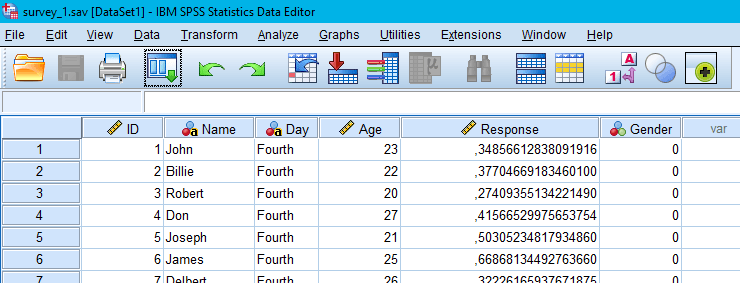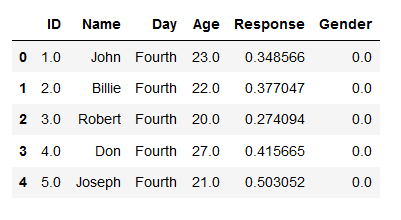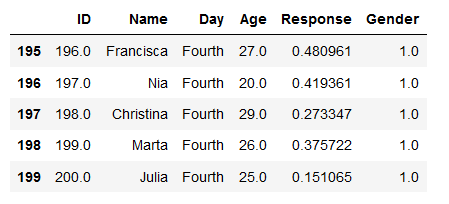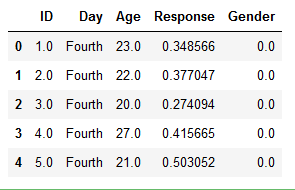The post How to Read & Write SPSS Files in Python using Pandas appeared first on Erik Marsja.
In this post we are going to learn 1) how to read SPSS (.sav) files in Python, and 2) how to write to SPSS (.sav) files using Python.
Python is a great general-purpose language as well as for carrying out statistical analysis and data visualization. However, Python is not really user-friendly for data storage. Thus, often our data will be archived using Excel, SPSS or similar software.

How to open a .sav file in Python? There are some packages as Pyreadstat, and Pandas which allow to perform this operation. If we are working with Pandas, the read_spss method will load a .sav file into a Pandas dataframe. Note, Pyreadstat will also create a Pandas dataframe from a SPSS file.
How to Open a SPSS file in Python
Here’s two simple steps on how to read .sav files in Python using Pandas (more details will be provided in this post):
- import pandas
in your script type “import pandas as pd “
- use read_spss
in your script use the read_spss method:
df = read_spss(‘PATH_TO_SAV_FILE”)
In this secion, we are going to learn how to load a SPSS file in Python using the Python package Pyreadstat. Before we use Pyreadstat we are going to install it. This Python package can be installed in two ways.
How to install Pyreadstat:
There are two very easy methods to install Pyreadstat.:
- Install Pyreadstat using pip:
Open up a terminal, or windows command prompt, and type pip install pyreadstat - Install using Conda:
Open up a terminal, or windows command prompt, and type conda install -c conda-forge pyreadstat
How to Load a .sav File in Python Using Pyreadstat
Every time we run our Jupyter notebook, we need to load the packages we need. In the, Python read SPSS example below we will use Pyreadstat and, thus, the first line of code will import the package:
import pyreadstat
Now, we can use the method read_sav to read a SPSS file. Note that, when we load a file using the Pyreadstat package, recognize that it will look for the file in Python’s working directory. In the read SPSS file in Python example below, we are going to use this SPSS file. Make sure to download it and put it in the correct folder (or change the path in the code chunk below):
df, meta = pyreadstat.read_sav('./SimData/survey_1.sav')
In the code chunk above we create two variables; df, and meta. As can be seen when using type df is a Pandas dataframe:
type(df)

Thus, we can use all methods available for Pandas dataframe objects. In the next line of code, we are going to print the 5 first rows of the dataframe using pandas head method.
df.head()

See more about working with Pandas dataframes in the following tutorials:
- Python Groupby Tutorial: Here you will learn about working the the groupby method to group Pandas dataframes.
- Learn how to take random samples from a pandas dataframe
- A more general, overview, of how to work with Pandas dataframe objects can be found in the Pandas Dataframe tutorial.
How to Read a SPSS file in Python Using Pandas
Pandas can, of course, also be used to load a SPSS file into a dataframe. Note, however, we need to install the Pyreadstat package as, at least right now, Pandas depends on this for reading .sav files. As always, we need to import Pandas as pd:
import pandas as pd
Now, when we have done that, we can read the .sav file into a Pandas dataframe using the read_spss method. In the read SPSS example below, we read the same data file as earlier and print the 5 last rows of the dataframe using Pandas tail method. Remember, using this method also requires you to have the file in the subfolder “simData” (or change the path in the script).
df = pd.read_spss('./SimData/survey_1.sav')
df.tail()

Note, that both read_sav (Pyreadstat) and read_spss have the arguments “usecols”. By using this argument, we can also select which columns we want to load from the SPSS file to the dataframe:
cols = ['ID', 'Day', 'Age', 'Response', 'Gender']
df = pd.read_spss('./SimData/survey_1.sav', usecols=cols)
df.head()

How to Write a SPSS file Using Python
Now we are going to learn how to save Pandas dataframe to a SPSS file. It’s simpe, we will use the Pyreadstats write_sav method. The first argument should be the Pandas dataframe that is going to be saved as a .sav file.
pyreadstat.write_sav(df, './SimData/survey_1_copy.sav')
Remember to put the right path, as second argument, when using write_sav to save a .sav file.
Unfortunately, Pandas don’t have a to_spss method, yet. But, as Pyreadstats is a dependency of Pandas read_spss method we can use it to write a SPSS file in Python.
Summary: Read and Write .sav Files in Python
Now we have learned how to read and write .sav files using Python. It was quite simple and both methods are, in fact, using the same Python packages.
Here’s a Jupyter notebook with the code used in this Python SPSS tutorial.
The post How to Read & Write SPSS Files in Python using Pandas appeared first on Erik Marsja.
from Planet Python
via read more
No comments:
Post a Comment